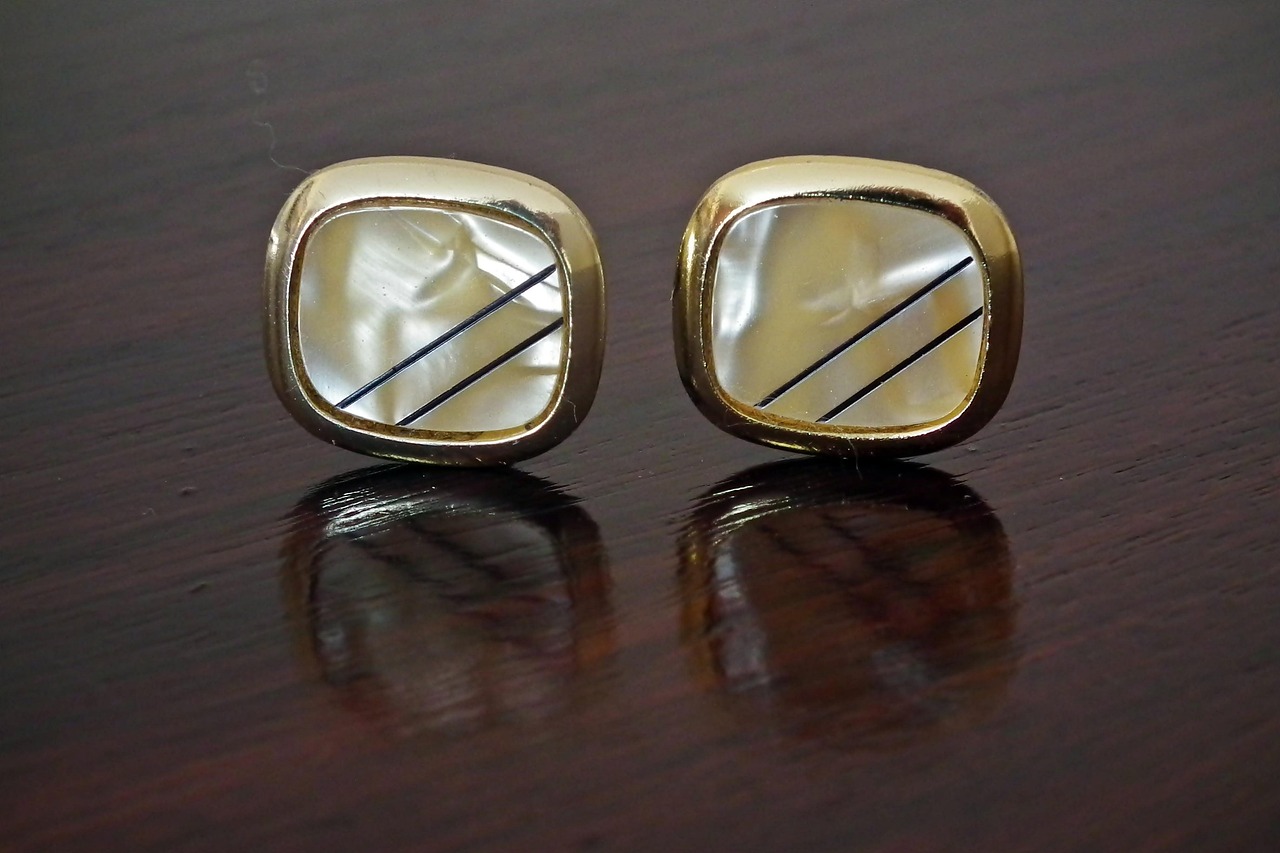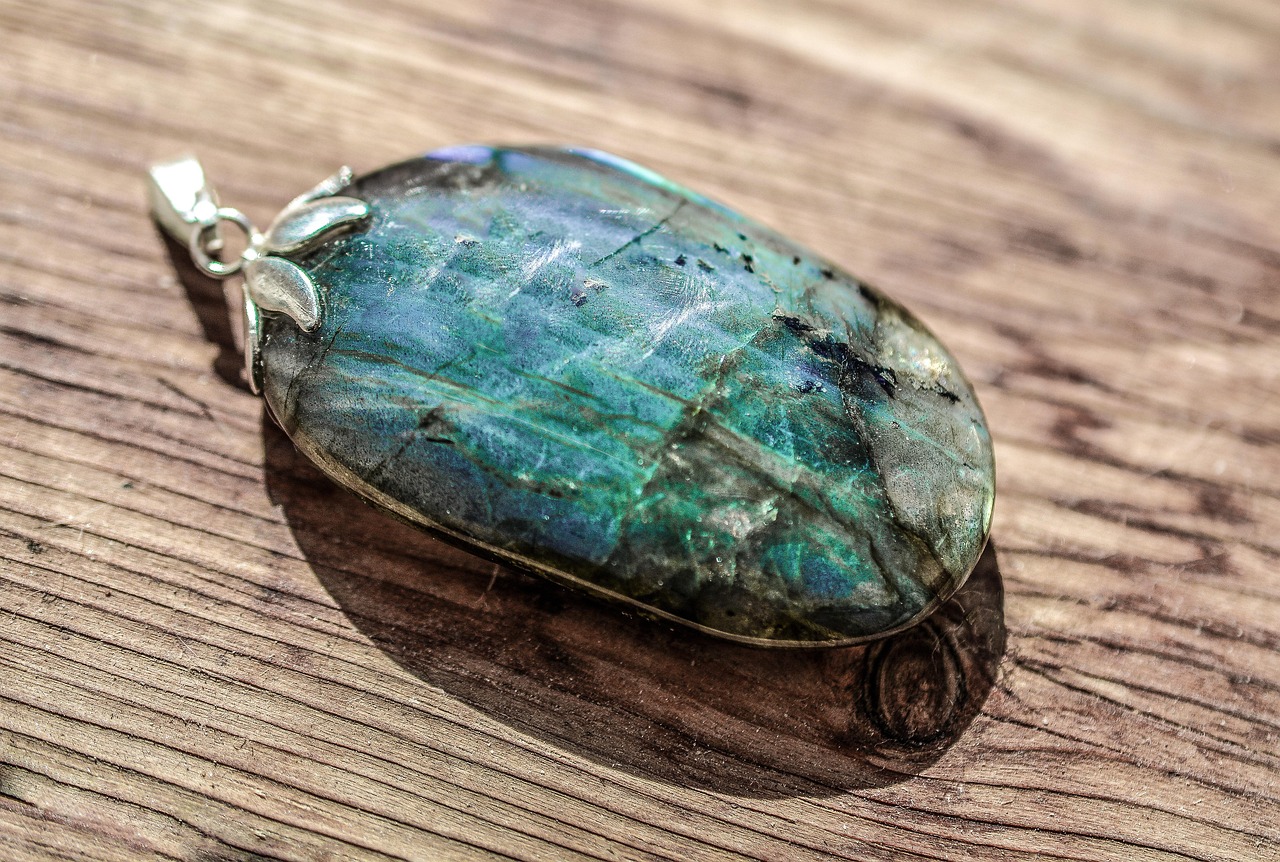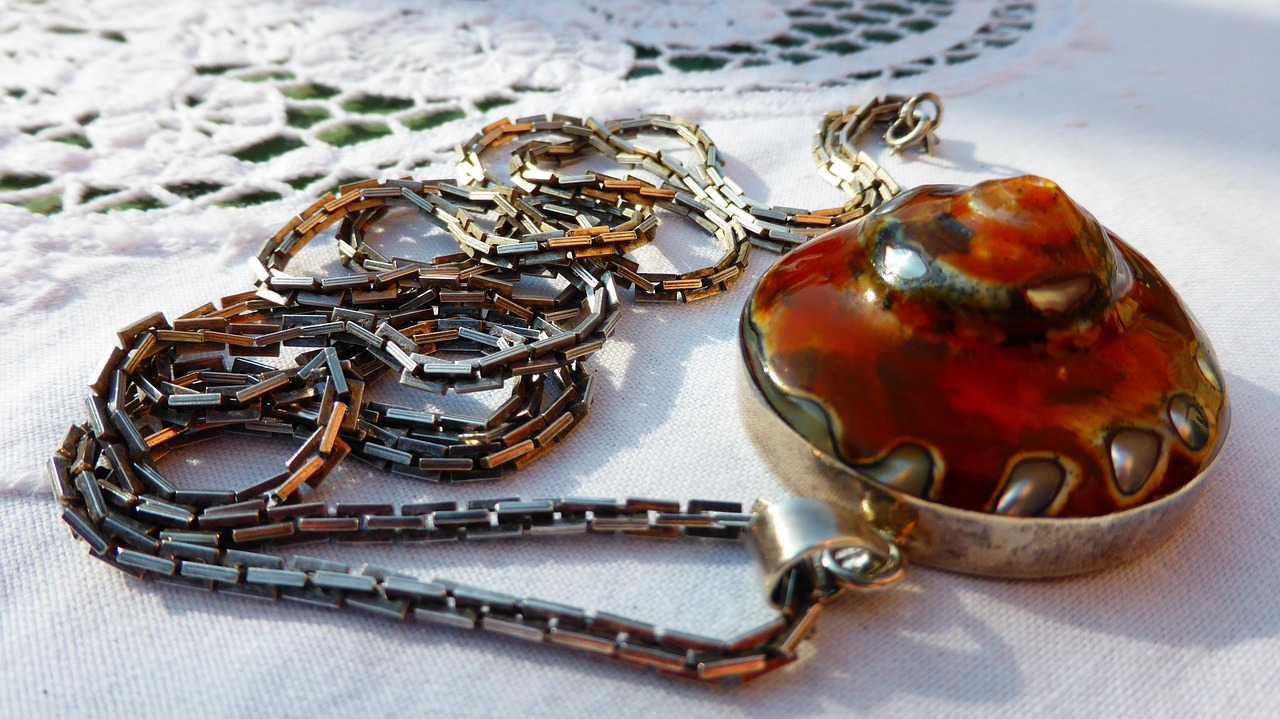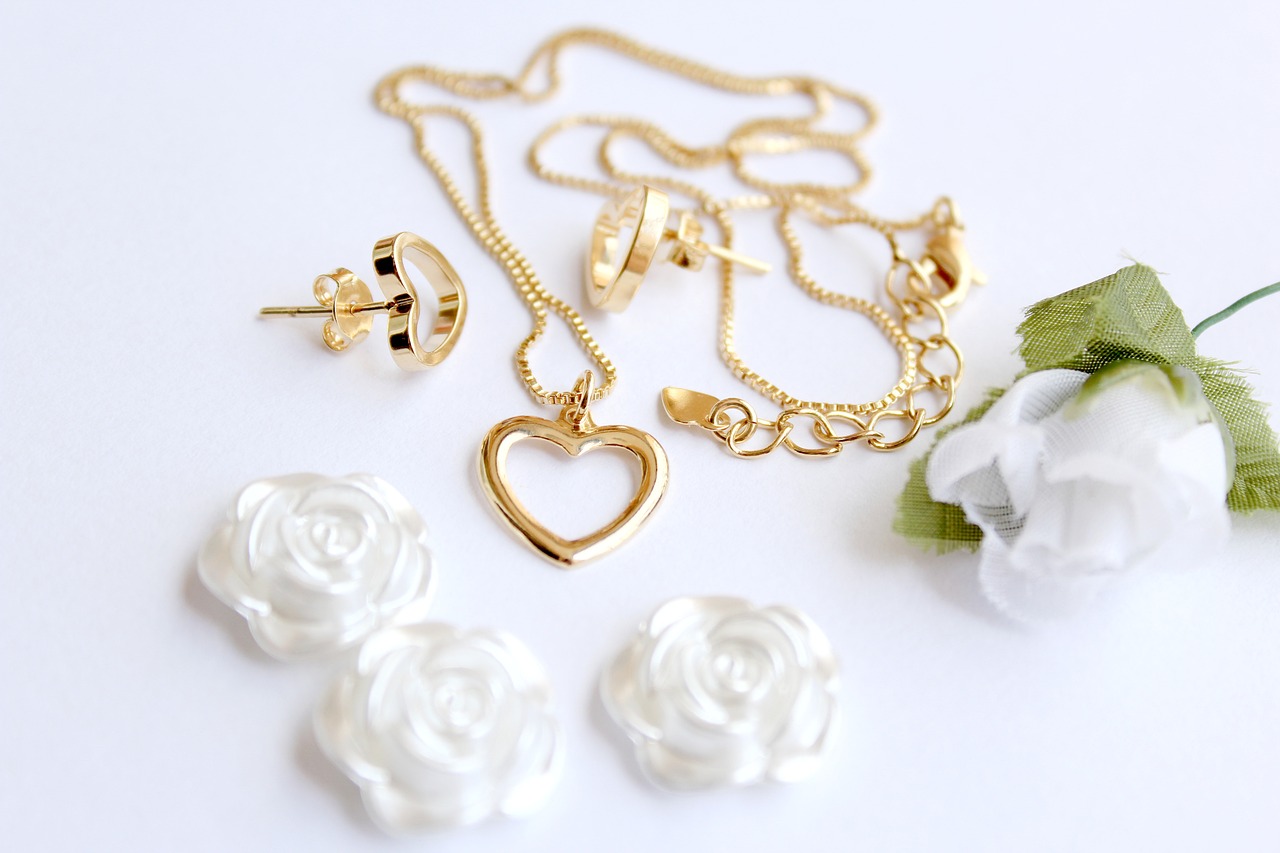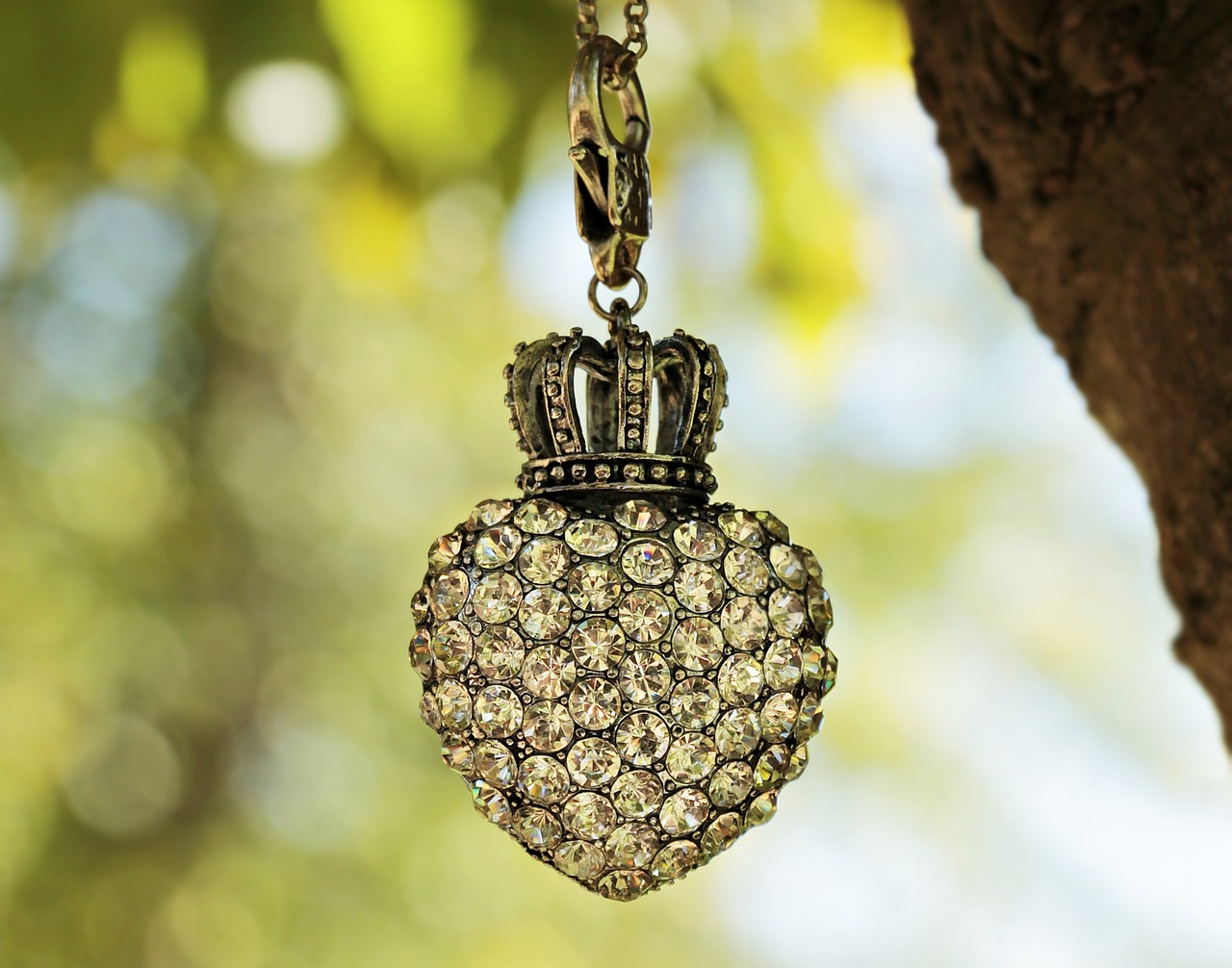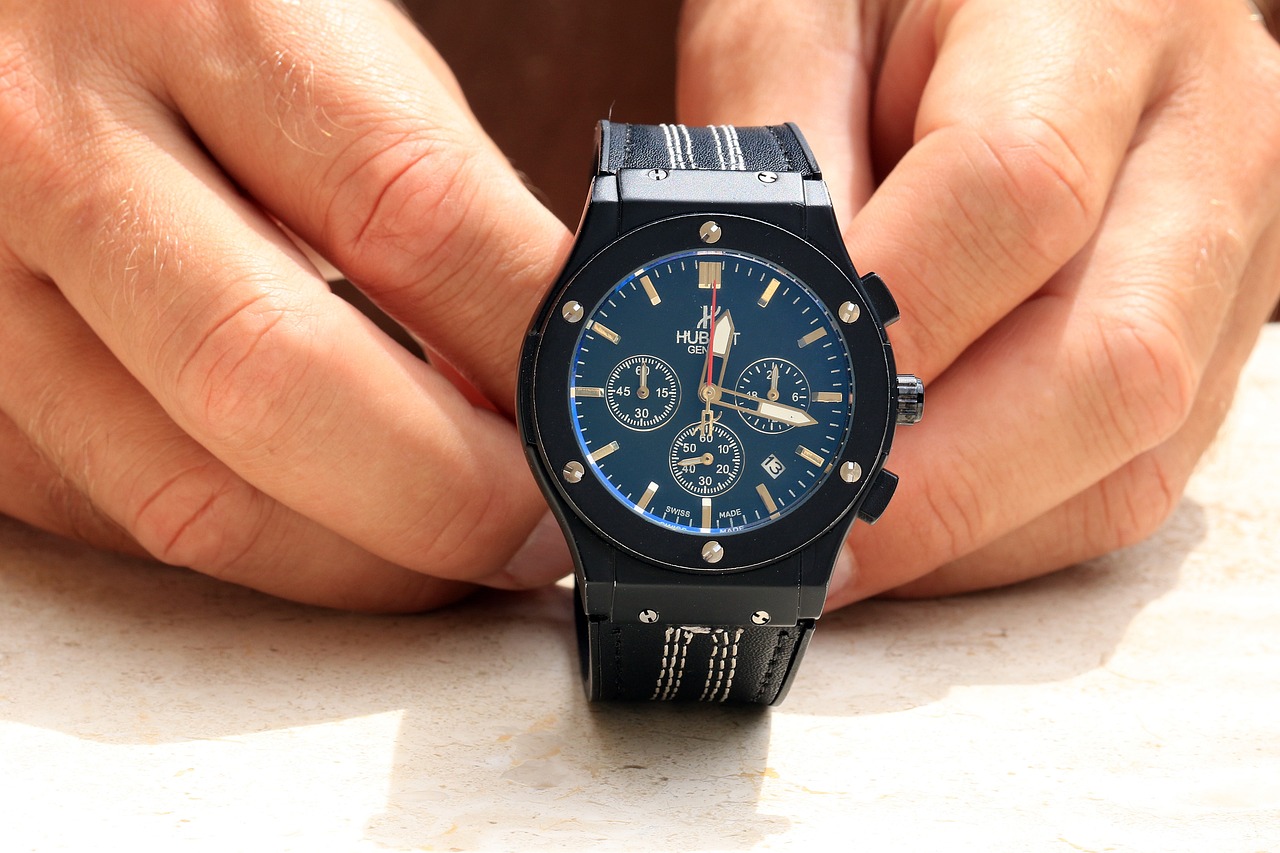3D-Printed Jewelry is transforming the landscape of fashion accessories, offering a unique blend of technology and artistry. This innovative approach to jewelry design enables creators to craft stunning pieces that were once impossible to produce using traditional methods. In this article, we will delve into the exciting world of 3D-printed jewelry, exploring its advantages, design possibilities, production processes, and its significant impact on the fashion industry.
3D-printed jewelry utilizes additive manufacturing techniques, allowing for intricate and customizable designs. Unlike conventional jewelry-making processes that often involve cutting and shaping materials, 3D printing builds items layer by layer, enabling the creation of complex geometries and personalized pieces.
The process begins with a digital model created using specialized design software. This model is then converted into a physical object through a 3D printer. The ability to rapidly prototype designs means that jewelers can experiment with various styles and materials without the constraints of traditional manufacturing.
- Rhinoceros (Rhino): Known for its precision and versatility.
- Tinkercad: User-friendly, ideal for beginners.
- Blender: Offers advanced modeling capabilities.
3D printing allows for a wide range of materials, including:
- Plastics: Lightweight and versatile.
- Metals: Such as stainless steel and gold, offering durability and luxury.
- Ceramics: Providing unique textures and finishes.
The benefits of 3D-printed jewelry are numerous:
- Customization: Customers can design pieces that reflect their personal style.
- Cost-Effectiveness: Reduced waste and lower production costs make it accessible for artisans and brands alike.
- Rapid Production: Quick turnaround times enable designers to respond to trends and customer demands swiftly.
In an era where sustainability is crucial, 3D printing presents a more eco-friendly option for jewelry manufacturing:
- Reducing Waste: The layer-by-layer approach minimizes material waste significantly.
- Using Sustainable Materials: Many 3D printing materials are recyclable or biodegradable, appealing to environmentally conscious consumers.
Despite its advantages, the industry grapples with several challenges:
- Quality Control: Variability in printing technology can affect product consistency.
- Consumer Perception: Some buyers may question the durability and craftsmanship of 3D-printed pieces.
The future of 3D-printed jewelry looks bright, with ongoing advancements in technology and materials. Emerging trends like bio-printing and the integration of smart technology into jewelry design are set to redefine the market. As consumer demand for personalized and innovative designs grows, 3D printing will likely become a standard practice in the jewelry industry.
In conclusion, 3D-printed jewelry represents a significant shift in how accessories are designed and produced. Its ability to offer unique, customizable pieces while addressing environmental concerns positions it as a leading trend in the fashion industry.

What is 3D-Printed Jewelry?
3D-printed jewelry is an innovative approach to creating accessories that has transformed the jewelry industry. Utilizing additive manufacturing techniques, this method allows for the production of intricate and customized designs that traditional craftsmanship often struggles to achieve. The advent of this technology has not only made jewelry creation more accessible but has also opened up new avenues for creativity and personalization.
At its core, 3D-printed jewelry refers to accessories that are manufactured layer by layer from a digital model. This process, known as additive manufacturing, involves using various materials, including plastics, metals, and even ceramics, to create unique pieces that cater to individual tastes and preferences. Unlike conventional methods that often involve subtracting material from a solid block, 3D printing builds objects from the ground up, which significantly reduces waste and allows for more complex designs.
The 3D printing process begins with a digital design created using specialized software. Designers can use tools such as Rhinoceros or Tinkercad to craft detailed models that can be easily modified. Once the design is finalized, it is sent to a 3D printer, which constructs the piece layer by layer. This method not only enhances precision but also allows for rapid prototyping, enabling designers to create and iterate on their designs quickly.
One of the most significant advantages of 3D-printed jewelry is the customization opportunities it offers. Customers can collaborate with designers to create pieces that reflect their personal style, whether it’s a unique ring, pendant, or bracelet. This level of personalization is challenging to achieve with traditional methods, where mass production often leads to uniformity.
Another benefit of 3D printing is its cost-effectiveness. By minimizing material waste and eliminating the need for complex tooling, production costs can be significantly reduced. This makes 3D printing an appealing option for both small artisans and large manufacturers, allowing them to offer unique pieces at competitive prices.
As sustainability becomes a growing concern, 3D printing presents a more eco-friendly alternative to traditional jewelry manufacturing. By reducing material waste and utilizing recyclable materials, this technology aligns with the values of environmentally conscious consumers.
Despite its many advantages, the 3D-printed jewelry industry faces several challenges. Quality control can be an issue, as variations in printing technology and materials may affect the final product’s consistency. Additionally, consumer acceptance remains a hurdle, with some potential buyers skeptical about the durability and craftsmanship of 3D-printed pieces.
The outlook for 3D-printed jewelry is promising, with continuous advancements in technology and materials expected to enhance design possibilities and production efficiency. As the market grows, consumers are likely to embrace the unique and personalized nature of these accessories, solidifying their place in the fashion industry.
As the technology evolves, new trends are emerging in the world of 3D-printed jewelry. Innovations such as bio-printing and the integration of smart technology into jewelry pieces are pushing the boundaries of what can be achieved. These developments not only enhance the aesthetic appeal of jewelry but also introduce functionality that traditional methods cannot offer.
In summary, 3D-printed jewelry represents a significant shift in the way accessories are designed and manufactured. With its emphasis on customization, cost-effectiveness, and sustainability, this technology is set to redefine the jewelry industry, making it more innovative and consumer-friendly.

How Does 3D Printing Work in Jewelry Design?
3D printing has emerged as a revolutionary technology in various industries, particularly in the realm of jewelry design. This innovative process allows for the creation of stunning, intricate pieces that were previously unimaginable with traditional methods. Understanding how 3D printing works in jewelry design is essential for both designers and consumers alike.
The 3D printing process begins with the creation of a detailed digital model using specialized software. This model serves as the blueprint for the final jewelry piece. Once the design is finalized, the software translates it into a format that the 3D printer can understand, typically a file type such as STL or OBJ.
Next, the 3D printer constructs the object layer by layer. This additive manufacturing technique involves depositing material, such as resin or metal, in precise increments. Each layer is meticulously built upon the last, allowing for the creation of complex geometries and fine details that traditional casting methods struggle to achieve.
Design software plays a crucial role in the 3D printing process. Programs like Rhinoceros, Tinkercad, and Blender provide designers with the tools necessary to create intricate models. These platforms enable users to experiment with shapes, sizes, and textures, leading to innovative designs that push the boundaries of creativity.
One of the most significant advantages of the layer-by-layer construction method is the unparalleled freedom and precision it offers. Designers can create pieces that feature complex patterns, interlocking components, and delicate filigree work that would be nearly impossible to achieve through traditional methods. This precision not only enhances the aesthetic appeal of the jewelry but also ensures a perfect fit for the wearer.
A wide array of materials can be utilized in 3D printing, including:
- Plastics: Ideal for prototyping and affordable pieces.
- Metals: Such as gold, silver, and titanium, providing durability and luxury.
- Ceramics: Offering unique textures and finishes.
Each material presents its own set of aesthetic qualities and durability, catering to diverse consumer preferences.
3D printing significantly enhances the customization opportunities available to consumers. Unlike traditional jewelry, which often involves standard sizes and designs, 3D printing allows for fully personalized pieces. Customers can collaborate with designers to create unique items that reflect their individual styles and preferences.
Despite its many advantages, the 3D-printed jewelry industry faces challenges. Ensuring consistent quality can be difficult, as variations in printing technology and materials may lead to discrepancies in the final product. Additionally, consumer acceptance remains a hurdle. Some individuals may question the durability and craftsmanship of 3D-printed items compared to traditionally made jewelry.
The potential for growth in the 3D-printed jewelry market is immense. As technology advances, we can expect improvements in materials and printing techniques, further enhancing design possibilities and production efficiency. With a growing consumer demand for personalized and innovative designs, 3D printing is set to become a staple in the jewelry industry.
In conclusion, understanding how 3D printing works in jewelry design opens up a world of possibilities for both creators and consumers. This technology not only allows for unparalleled creativity and customization but also paves the way for a more sustainable future in jewelry manufacturing.
Design Software for 3D Jewelry
In the rapidly evolving field of 3D jewelry design, software tools play a pivotal role in enabling designers to bring their creative visions to life. With various options available, designers can explore intricate models and innovative designs that were once impossible with traditional methods.
When it comes to creating stunning 3D jewelry pieces, several software platforms stand out:
- Rhino: Renowned for its versatility, Rhino is a favorite among professional jewelry designers. Its powerful modeling tools allow for detailed and complex designs, making it ideal for creating intricate patterns and shapes.
- Tinkercad: This user-friendly platform is perfect for beginners. It offers a simplified interface and essential tools for creating basic 3D models, making it an excellent starting point for those new to jewelry design.
- Blender: Known for its advanced capabilities, Blender is a free and open-source software that provides extensive modeling, rendering, and animation features. It is particularly useful for designers looking to create unique textures and detailed designs.
- Fusion 360: This CAD software is popular for its ability to integrate engineering and design. It allows for precise modeling and simulation, making it suitable for designers who want to ensure functionality along with aesthetics.
- ZBrush: Ideal for sculpting, ZBrush enables artists to create highly detailed and organic designs. Its brush-based interface allows for a level of creativity that is particularly beneficial for custom jewelry pieces.
Utilizing advanced design software not only streamlines the creative process but also enhances the overall quality of the jewelry produced. Here are some key benefits:
- Customization: Designers can easily modify existing models or create entirely new designs tailored to individual customer preferences.
- Rapid Prototyping: The ability to quickly create and test designs allows for faster iterations, reducing the time from concept to final product.
- Precision: Software tools provide designers with the ability to create highly precise models, ensuring that the final pieces meet quality standards and customer expectations.
- Visualization: Advanced rendering capabilities allow designers to visualize their creations in realistic settings, aiding in the presentation to clients and stakeholders.
Many of the software options mentioned, such as Tinkercad, are designed with beginners in mind, offering tutorials and user-friendly interfaces. However, more advanced tools like Rhino and Blender may require a steeper learning curve. Fortunately, numerous online resources, including video tutorials and forums, are available to help new users gain proficiency.
As technology continues to advance, 3D jewelry design software is expected to evolve significantly. Innovations such as artificial intelligence and machine learning are likely to enhance design capabilities, allowing for even more intricate and personalized jewelry pieces. Additionally, the integration of augmented reality (AR) may enable customers to visualize designs on themselves before purchasing, further revolutionizing the jewelry buying experience.
In conclusion, the landscape of 3D jewelry design is being transformed by a variety of software tools that cater to both professional and novice designers. With the ability to customize, prototype rapidly, and visualize creations, these programs are essential for anyone looking to make their mark in the jewelry industry.
Benefits of Using CAD in Jewelry Design
In the realm of jewelry design, the integration of Computer-Aided Design (CAD) software has transformed traditional practices into a more efficient and innovative process. This technology not only allows for intricate designs but also enhances the overall quality of the final product. Let’s delve into the and explore how it revolutionizes the industry.
CAD software serves as a vital tool for jewelry designers, enabling them to create detailed and precise models. The ability to visualize designs in a digital format allows for easier modifications and adjustments, which can significantly reduce the likelihood of errors during production.
One of the primary advantages of using CAD in jewelry design is the flexibility it offers. Designers can experiment with various shapes, sizes, and materials without the risk of wasting physical resources. This freedom encourages creativity and innovation, allowing designers to push the boundaries of traditional jewelry-making.
CAD software streamlines the prototyping process, allowing designers to create and modify 3D models quickly. This efficiency means that designers can produce multiple iterations of a piece in a fraction of the time it would take using traditional methods. As a result, the time from concept to final product is significantly reduced, enhancing overall productivity.
Utilizing CAD technology can lead to substantial cost savings. By minimizing material waste and reducing the number of prototypes needed, designers can lower production costs. This cost-effectiveness is particularly beneficial for small businesses and independent artisans who may have limited budgets.
CAD software allows for precise measurements and intricate detailing that are often challenging to achieve by hand. This level of accuracy ensures that the final product aligns closely with the designer’s vision, resulting in higher quality pieces that meet customer expectations.
With CAD, collaboration among team members becomes more straightforward. Designers can easily share digital models with clients and manufacturers, facilitating clearer communication and feedback. This collaborative approach helps to ensure that all stakeholders are on the same page, reducing misunderstandings and enhancing the overall design process.
The synergy between CAD and 3D printing technology is another significant benefit. Once a design is finalized in CAD, it can be directly translated into a physical piece using 3D printing. This integration not only speeds up production but also allows for the creation of complex designs that would be difficult or impossible to achieve through traditional manufacturing methods.
CAD software enables designers to offer customization options for their clients. Whether it’s adjusting the size of a ring or incorporating unique design elements, CAD allows for a high degree of personalization. This capability meets the growing consumer demand for unique and individualized jewelry pieces.
In summary, the benefits of using CAD in jewelry design are manifold, ranging from enhanced design flexibility and efficiency to improved accuracy and collaboration. As the jewelry industry continues to embrace technological advancements, CAD stands out as an essential tool that empowers designers to innovate and create exceptional pieces that captivate consumers.
Popular 3D Design Programs
In the realm of 3D jewelry design, choosing the right software is crucial for both aspiring and professional designers. The tools available today offer a variety of features that cater to different aspects of the jewelry-making process, from initial design to final production. Below, we delve into some of the most popular programs that are shaping the future of jewelry design.
Blender is an open-source 3D modeling software that has gained immense popularity among jewelry designers due to its versatility and comprehensive set of features. It allows users to create highly detailed models with precision. Its sculpting tools enable intricate designs, while the rendering capabilities provide realistic visualizations. Additionally, Blender supports various plugins that can enhance the jewelry design workflow, making it a favorite among both hobbyists and professionals.
Fusion 360 is a cloud-based CAD software developed by Autodesk, specifically designed for product design and engineering. Its parametric modeling capabilities are particularly beneficial for jewelry designers who require precision and flexibility in their designs. Fusion 360 allows for easy modifications, enabling designers to iterate quickly and efficiently. Furthermore, its integration with CAM (Computer-Aided Manufacturing) tools streamlines the process from design to production, making it ideal for those looking to create functional jewelry pieces.
ZBrush is renowned for its advanced sculpting tools, which are perfect for creating organic shapes and intricate details in jewelry design. Unlike traditional CAD software, ZBrush focuses on artistic modeling, allowing designers to push the boundaries of creativity. Its ability to handle millions of polygons enables the creation of highly detailed textures and forms, making it suitable for unique statement pieces. ZBrush also offers features like 3D printing compatibility, which is essential for bringing digital designs into the physical realm.
Rhino is a favorite among professional jewelers due to its precision and flexibility. It offers a robust set of tools for creating complex geometries, making it ideal for designing intricate jewelry pieces. Rhino’s compatibility with various plugins, such as Grasshopper, allows for algorithmic design, enabling designers to create parametric models that can be easily adjusted. This makes Rhino an excellent choice for those looking to combine artistry with technical precision.
Tinkercad is an intuitive, browser-based 3D design tool that is perfect for beginners. Its user-friendly interface simplifies the design process, allowing users to create jewelry models without extensive training. While it may lack some advanced features found in professional software, Tinkercad is a great starting point for those new to 3D design. It also offers a library of shapes and components that can be easily manipulated, making it accessible for anyone looking to explore their creativity.
When selecting a 3D design program for jewelry, it’s essential to consider your specific needs and skill level. Whether you prioritize precision, creativity, or ease of use, there is a software solution that can meet your requirements. Many designers often use a combination of these tools to leverage the strengths of each, resulting in a more comprehensive design process.
As the world of 3D jewelry design continues to evolve, staying updated on the latest software and tools is vital for success in this innovative field. With the right program, designers can unlock their creative potential and produce stunning, customized jewelry that meets the demands of modern consumers.
Materials Used in 3D-Printed Jewelry
In the innovative realm of 3D-printed jewelry, the choice of materials plays a pivotal role in defining the aesthetics and functionality of each piece. With advancements in technology, a wide range of materials is now available, allowing designers to explore unique textures, colors, and finishes that were previously unattainable through traditional methods.
3D printing technology accommodates various materials, each offering distinct advantages:
- Plastics: Often used for prototypes and affordable pieces, plastics such as PLA and ABS are lightweight and versatile. They can be easily dyed and molded into intricate designs.
- Metals: Metals like stainless steel, gold, and silver can be used for high-end jewelry, providing durability and a luxurious finish. Metal 3D printing techniques, such as Selective Laser Melting (SLM), create solid, complex structures that are both strong and visually appealing.
- Ceramics: Ceramic materials are gaining popularity for their unique aesthetic qualities. They offer a range of finishes, from glossy to matte, and can be used to create intricate, delicate designs that maintain structural integrity.
- Resins: Photopolymer resins are commonly used in SLA (Stereolithography) printing. They provide high-resolution details and smooth surfaces, making them ideal for intricate jewelry designs.
- Composites: Combining materials, such as metal-infused plastics, allows for innovative designs that leverage the properties of both materials, resulting in unique textures and finishes.
The choice of material not only influences the aesthetic appeal of the jewelry but also impacts its durability and comfort when worn. For instance, while metals offer a classic and luxurious look, plastics may be preferred for everyday wear due to their lightweight nature. Furthermore, the ability to use eco-friendly materials aligns with the growing consumer demand for sustainable products.
Different materials contribute varying aesthetic qualities to 3D-printed jewelry:
- Plastics: Can be produced in a wide array of colors and finishes, allowing for playful and vibrant designs.
- Metals: Provide a timeless elegance and can be polished to a high shine or left with a matte finish, catering to diverse tastes.
- Ceramics: Often feature intricate patterns and textures, offering a unique artistic touch that stands out in any collection.
- Resins: Known for their ability to capture fine details, they are perfect for creating delicate and intricate designs.
Material selection is crucial in 3D-printed jewelry as it directly influences the final product’s quality, appearance, and marketability. Designers must consider factors such as:
- Target Audience: Understanding customer preferences can guide material choices, ensuring that the final product aligns with market demands.
- Production Costs: Some materials may be more expensive than others, impacting the overall cost of production and retail pricing.
- Durability: Certain materials may be more prone to wear and tear, affecting the longevity of the jewelry.
As the 3D printing industry continues to evolve, the exploration of new materials will undoubtedly expand the possibilities for jewelry design, allowing for even more creativity and innovation. The future of 3D-printed jewelry is bright, with endless opportunities for customization and personalization, catering to the unique tastes of consumers around the world.

Advantages of 3D-Printed Jewelry
3D-printed jewelry is at the forefront of innovation in the accessories market, offering a myriad of advantages that traditional manufacturing methods cannot match. This article delves into the key benefits of 3D printing in jewelry design, showcasing how it transforms the way we create and wear accessories.
One of the most significant advantages of 3D printing is the reduction of material waste. Unlike traditional methods that often involve cutting away excess material from a solid block, 3D printing utilizes an additive process. This means that items are built layer by layer, using only the necessary amount of material. As a result, the environmental impact is minimized, aligning with the growing demand for sustainable practices in manufacturing.
Traditional jewelry-making processes can be time-consuming, requiring extensive labor and multiple stages of production. In contrast, 3D printing significantly accelerates production times. Once a design is finalized in digital form, it can be printed in a matter of hours. This rapid prototyping allows designers to bring their visions to life quickly, catering to market demands and consumer trends more efficiently.
Another compelling advantage of 3D-printed jewelry is the ability to create highly personalized pieces. Customers can collaborate with designers to develop unique accessories that reflect their individual styles and preferences. This level of customization is not feasible with traditional methods, where mass production often leads to generic designs. With 3D printing, every piece can be tailored to meet specific customer desires, enhancing the overall shopping experience.
3D printing can also be cost-effective for both small artisans and large manufacturers. The reduction in material waste translates to lower material costs, while the elimination of complex tooling requirements further decreases production expenses. This affordability enables designers to experiment with innovative ideas without the financial risk typically associated with traditional manufacturing.
3D printing technology opens up a world of design possibilities that were previously unimaginable. Designers can create intricate patterns and complex geometries that are difficult or impossible to achieve with conventional techniques. This flexibility encourages creativity, allowing for the exploration of new aesthetics and forms in jewelry design.
The rise of 3D printing has democratized the jewelry industry, making it more accessible for small businesses and independent designers. With lower startup costs and the ability to produce small batches of customized items, aspiring jewelers can enter the market without the need for significant investment in traditional equipment.
As sustainability becomes increasingly important, the environmental benefits of 3D printing cannot be overlooked. Many materials used in 3D printing are recyclable or biodegradable, providing eco-conscious consumers with alternatives to traditional jewelry made from non-sustainable resources. This shift toward greener practices is vital in addressing the fashion industry’s impact on the environment.
In summary, the advantages of 3D-printed jewelry are transforming the industry by reducing waste, speeding up production, and offering unparalleled customization options. As technology continues to evolve, it is likely that these benefits will become even more pronounced, paving the way for a new era of jewelry design that prioritizes sustainability, creativity, and consumer preferences.
Customization Opportunities
In the evolving landscape of jewelry design, 3D-printed jewelry stands out for its remarkable ability to offer fully customized designs. This innovation allows customers to create pieces that are not only unique but also deeply personal, reflecting their individual style and preferences.
Customization in jewelry is more than just a trend; it embodies a shift towards personalization and self-expression. Many consumers are moving away from mass-produced items in favor of pieces that tell their stories. The ability to customize jewelry allows individuals to incorporate elements that resonate with their life experiences, values, and aesthetics.
3D printing technology empowers designers and consumers alike by allowing for intricate, personalized designs that traditional methods cannot replicate. With the use of advanced CAD software, designers can create detailed digital models that can be modified to suit specific tastes. Once the design is finalized, the 3D printer brings it to life, layer by layer, ensuring precision and uniqueness.
Tools like Rhinoceros, Tinkercad, and Fusion 360 have democratized the design process. These programs enable users, even those without extensive training, to create bespoke jewelry designs. This accessibility fosters creativity, allowing customers to experiment with shapes, materials, and styles until they find the perfect match for their vision.
- Engraving: Personal messages or symbols can be engraved onto pieces, adding a sentimental touch.
- Material Selection: Customers can choose from a variety of materials, including metals, plastics, and even sustainable options.
- Color Choices: 3D printing allows for a wide range of colors, enabling clients to select hues that resonate with their personal style.
- Shape and Size: Custom sizing ensures that the jewelry fits perfectly, while unique shapes can reflect individual tastes.
The advantages of opting for customized 3D-printed jewelry are manifold:
- Uniqueness: Each piece is one-of-a-kind, making it a perfect gift or personal statement.
- Emotional Value: Custom jewelry often carries significant emotional weight, as it can commemorate special occasions or relationships.
- Quality Control: Customers can oversee the design process, ensuring that the final product meets their expectations.
- Innovation: The technology allows for designs that push the boundaries of traditional jewelry-making.
While the opportunities for customization are enticing, challenges do exist. Some consumers may hesitate due to concerns about the durability and craftsmanship of 3D-printed pieces. Additionally, the need for skilled designers who can bring intricate ideas to life is paramount. Overcoming these hurdles requires education and transparency about the capabilities and quality of 3D-printed jewelry.
The future of customized 3D-printed jewelry looks bright. As technology continues to advance, we can expect even more innovative solutions that enhance personalization. From smart jewelry that integrates technology to bio-printing techniques that incorporate organic materials, the possibilities are endless.
In conclusion, the ability to create customized jewelry through 3D printing is revolutionizing the industry, allowing for a level of personalization that was previously unattainable. As consumers increasingly seek unique expressions of their identity, 3D-printed jewelry will undoubtedly continue to grow in popularity, shaping the future of fashion and personal accessories.
Cost-Effectiveness of 3D Printing
In the ever-evolving landscape of manufacturing, 3D printing has emerged as a game-changer, particularly in the jewelry industry. One of the most compelling advantages of this innovative technology is its cost-effectiveness. By significantly reducing material waste and eliminating the need for complex tooling, 3D printing is reshaping how both small artisans and large manufacturers approach production.
Traditional manufacturing methods often involve a significant amount of waste. For instance, when crafting jewelry through conventional techniques, excess materials are frequently cut away, leading to substantial losses. In contrast, 3D printing operates on an additive manufacturing principle, where objects are built layer by layer. This method ensures that only the necessary material is used, drastically minimizing waste.
Another major factor contributing to the cost-effectiveness of 3D printing is the elimination of complex tooling. In traditional manufacturing, creating molds and tools for specific designs can be time-consuming and expensive. With 3D printing, once a digital model is designed, it can be printed directly, bypassing the need for specialized tools. This not only saves time but also reduces the overall production costs, making it feasible for small businesses to compete with larger manufacturers.
The affordability of 3D printing technology has opened new avenues for small artisans. With lower initial investment costs and the ability to produce unique, customized pieces, artisans can cater to niche markets without the financial burden of traditional manufacturing. This democratization of production allows for greater creativity and personalization, enabling artisans to create bespoke jewelry that resonates with individual customers.
For larger manufacturers, the cost savings associated with 3D printing can lead to increased scalability. As demand fluctuates, manufacturers can quickly adjust their production processes without the need for extensive retooling or inventory management. This flexibility is particularly valuable in today’s fast-paced market, where consumer preferences can change rapidly.
While the initial investment in 3D printing technology may seem daunting, the long-term financial benefits can be substantial. Reduced material waste, lower labor costs due to simplified production processes, and the ability to quickly adapt to market trends all contribute to a more sustainable and profitable business model. As companies continue to adopt this technology, the potential for cost savings will likely become even more pronounced.
In summary, the cost-effectiveness of 3D printing is revolutionizing the jewelry industry by lowering production costs through reduced material waste and the elimination of complex tooling. This technology not only empowers small artisans to thrive but also enables large manufacturers to scale efficiently. As the adoption of 3D printing continues to grow, its impact on production costs and the overall market landscape will undoubtedly shape the future of jewelry design and manufacturing.
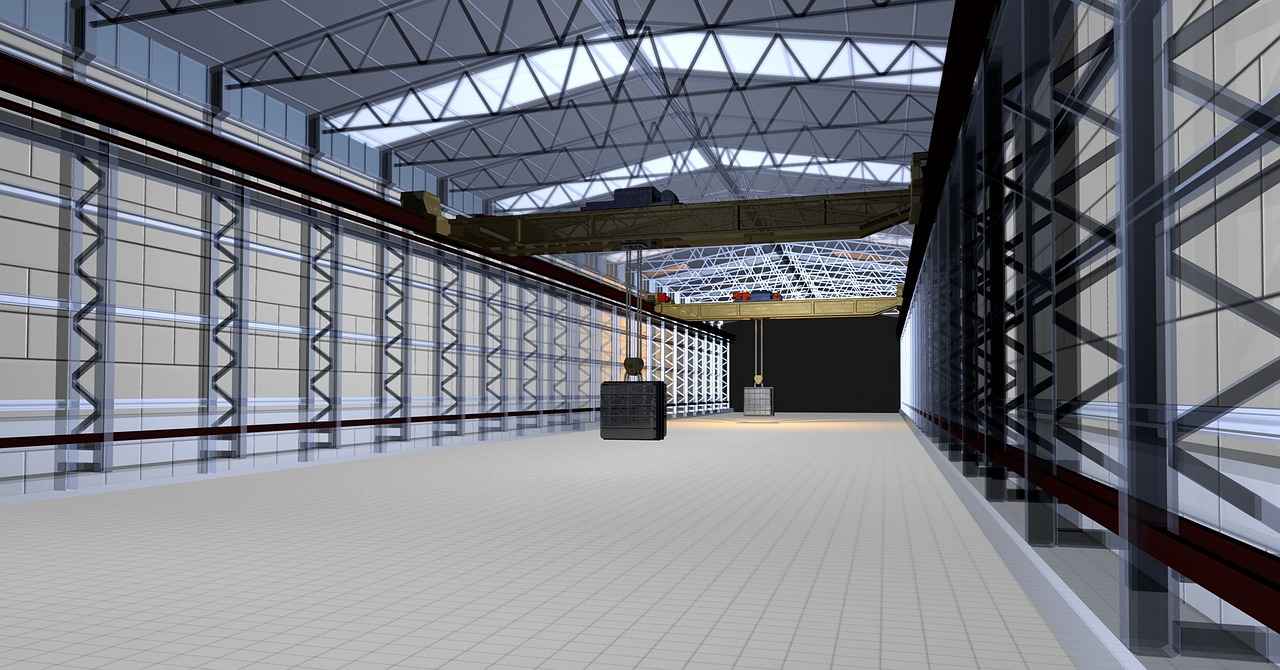
The Environmental Impact of 3D Printing in Jewelry
As the world increasingly prioritizes sustainability, the jewelry industry is undergoing a significant transformation. One of the most promising innovations in this realm is 3D printing, which serves as a more environmentally friendly alternative to traditional jewelry manufacturing methods. This technology not only minimizes waste but also allows for the use of recyclable materials, aligning with the growing consumer demand for sustainable products.
3D printing, or additive manufacturing, has revolutionized the way jewelry is designed and produced. By building items layer by layer, this process significantly reduces material waste compared to traditional methods, which often involve cutting and shaping materials from larger blocks. This reduction in waste is a crucial step toward a more sustainable future in the jewelry industry.
One of the most compelling advantages of 3D printing is its ability to create intricate designs without the need for excess material. Traditional jewelry manufacturing often results in substantial scrap, as artisans carve out pieces from solid materials. In contrast, 3D printing only uses the material necessary to create the final product. This layer-by-layer approach not only conserves resources but also allows for more complex and customized designs.
Another significant aspect of 3D-printed jewelry is the variety of eco-friendly materials available. Many 3D printing processes utilize biodegradable plastics and metals that can be recycled, reducing the environmental footprint of the final product. For instance, materials like PLA (polylactic acid) are derived from renewable resources, making them a sustainable choice for jewelry production. Additionally, advancements in material science are leading to the development of new, eco-friendly options that further enhance sustainability.
As consumers become more environmentally conscious, their preferences are shifting towards sustainable products. This change is reflected in the growing demand for 3D-printed jewelry, which offers a unique combination of customization and eco-friendliness. Brands that embrace 3D printing are not only appealing to a market that values sustainability but are also setting a precedent for responsible manufacturing practices.
Despite its advantages, the adoption of 3D printing in the jewelry industry does come with challenges. Ensuring consistent quality across different materials and designs can be difficult, and some consumers may still harbor skepticism regarding the durability and craftsmanship of 3D-printed pieces. Educating customers about the benefits of 3D printing and the quality of materials used is essential for overcoming these barriers.
The future of 3D-printed jewelry looks bright, with continuous advancements in technology enhancing both design possibilities and production efficiency. As the industry evolves, we can expect to see even more innovative materials and techniques that further reduce environmental impact. The integration of smart technologies and bio-printing is also on the horizon, potentially leading to groundbreaking developments in sustainable jewelry.
In conclusion, the environmental impact of 3D printing in jewelry manufacturing is profound. By minimizing waste and utilizing eco-friendly materials, this innovative technology not only meets the demands of modern consumers but also paves the way for a more sustainable future in the fashion industry. As awareness grows and technology advances, 3D-printed jewelry is poised to become a staple in eco-conscious fashion.
Reducing Material Waste
In the quest for sustainability, the jewelry industry is undergoing a significant transformation with the introduction of 3D printing technology. Unlike traditional jewelry-making methods that often involve cutting away excess material, 3D printing builds objects layer by layer, significantly reducing waste and promoting sustainable practices. This innovative approach not only conserves resources but also aligns with the growing consumer demand for eco-friendly products.
Traditional jewelry manufacturing typically involves subtractive processes where raw materials are meticulously cut, shaped, and polished. This often results in substantial scrap material that ultimately contributes to environmental degradation. In contrast, 3D printing, also known as additive manufacturing, constructs items directly from a digital model, allowing for a more efficient use of materials. By only utilizing the necessary amount of material for each piece, this method minimizes waste and enhances the overall sustainability of the production process.
- Layer-by-Layer Construction: The additive nature of 3D printing means that objects are built one layer at a time. This method ensures that every bit of material used is essential to the final product, reducing the likelihood of excess.
- Design Flexibility: Designers can create intricate and complex shapes that would be impossible or inefficient to achieve with traditional methods. This flexibility allows for innovative designs that require less material while still maintaining aesthetic appeal.
- Rapid Prototyping: 3D printing facilitates quick iterations of designs, allowing for adjustments and modifications without the need for extensive material use. This rapid prototyping process not only saves time but also reduces the amount of material wasted during the design phase.
The environmental impact of reduced waste in 3D printing extends beyond just material conservation. By minimizing the extraction and processing of raw materials, this technology contributes to a lower carbon footprint. Furthermore, many 3D printing materials are recyclable or made from sustainable sources, enhancing the eco-friendliness of the final products. This is particularly appealing to consumers who are increasingly aware of their environmental impact and are seeking products that reflect their values.
As awareness of environmental issues grows, consumers are becoming more discerning about the products they choose to purchase. The demand for sustainable jewelry options is on the rise, prompting many designers and brands to adopt 3D printing techniques. By highlighting the reduced waste aspect of their production processes, these brands can attract a more environmentally conscious audience.
Moreover, the trend towards personalization in consumer goods is also benefiting from 3D printing. Customers are no longer satisfied with mass-produced items; they want unique pieces that reflect their individual styles. 3D printing allows for this level of customization without the associated waste of traditional methods, making it a win-win for both consumers and the environment.
Despite its numerous advantages, the transition to 3D-printed jewelry is not without challenges. One of the primary concerns is ensuring consistent quality across different printing technologies and materials. Variations in printing processes can lead to discrepancies in the final product, which can affect consumer trust and acceptance.
Additionally, educating consumers about the benefits of 3D-printed jewelry is essential for wider acceptance. Many potential buyers still harbor misconceptions regarding the durability and craftsmanship of these pieces. By providing transparent information and showcasing the quality of 3D-printed items, brands can help alleviate these concerns.
In conclusion, the use of 3D printing in jewelry making represents a significant step towards a more sustainable future. By reducing material waste and offering customizable options, this innovative technology is reshaping the industry and meeting the evolving demands of consumers. As the market continues to grow, it is imperative for designers and brands to embrace these practices, ensuring that they not only meet consumer expectations but also contribute positively to the environment.
Using Eco-Friendly Materials
In an era where sustainability is paramount, 3D-printed jewelry is leading the charge in eco-friendly fashion. The industry is witnessing a significant shift as consumers increasingly prioritize environmental responsibility in their purchasing decisions. A vital component of this movement is the use of recyclable and biodegradable materials in the production of jewelry, which not only minimizes waste but also aligns with the growing demand for sustainable products.
3D printing, or additive manufacturing, is inherently more sustainable than traditional manufacturing methods. By building objects layer by layer, it significantly reduces material waste. Traditional jewelry-making often involves cutting away excess material from a solid block, leading to substantial waste. In contrast, 3D printing utilizes only the necessary amount of material, making it a more efficient option.
There is a diverse range of materials available for 3D printing that are both recyclable and biodegradable. Below are some of the most commonly used materials:
- PLA (Polylactic Acid): A biodegradable plastic derived from renewable resources like corn starch or sugarcane, PLA is popular in 3D printing due to its ease of use and environmental benefits.
- Recycled PETG: This material is made from recycled PET (the plastic commonly used in water bottles). It is durable, easy to print, and contributes to reducing plastic waste.
- Bio-resins: These are derived from natural sources and can be used in resin printing. They offer a sustainable alternative to traditional petroleum-based resins.
- Metal Alloys: Many metal powders used in 3D printing can be recycled, allowing for the reuse of materials and reducing the need for new metal extraction.
Choosing eco-friendly materials for 3D-printed jewelry comes with several advantages:
- Reduced Environmental Impact: By utilizing recyclable and biodegradable materials, the jewelry industry can significantly decrease its carbon footprint and contribute to a healthier planet.
- Consumer Appeal: Today’s consumers are more informed and concerned about sustainability. Jewelry made from eco-friendly materials appeals to this demographic, enhancing brand loyalty and marketability.
- Innovation Opportunities: The use of sustainable materials often drives innovation, encouraging designers to experiment with new textures, colors, and forms.
While the benefits of using eco-friendly materials in 3D-printed jewelry are clear, there are challenges to consider:
- Material Limitations: Some eco-friendly materials may not have the same durability or aesthetic qualities as traditional materials, which can limit design options.
- Cost Factors: Eco-friendly materials can sometimes be more expensive than conventional options, which may deter some designers and consumers.
- Consumer Education: There is a need for ongoing education about the benefits and performance of eco-friendly materials to overcome skepticism among consumers.
As technology advances, the future of eco-friendly 3D-printed jewelry looks promising. Innovations in material science are leading to the development of even more sustainable options, while consumer demand for ethical fashion continues to grow. Brands that embrace these changes will likely thrive in a market that increasingly values sustainability.
In conclusion, the integration of eco-friendly materials in 3D-printed jewelry not only supports environmental sustainability but also meets the evolving demands of conscious consumers. As the industry continues to innovate and adapt, the potential for creating beautiful, sustainable accessories is limitless.

Challenges Facing 3D-Printed Jewelry
The rise of 3D-printed jewelry has brought innovation and creativity to the fashion industry, but it is not without its challenges. As this technology continues to evolve, several hurdles must be addressed to ensure its growth and acceptance in the market. Below, we explore the key challenges facing the 3D-printed jewelry industry.
- Quality Control Issues
- Consumer Acceptance of 3D-Printed Jewelry
- The Need for Skilled Designers
- Intellectual Property Concerns
- Market Saturation
- Technological Limitations
One of the most significant challenges in the 3D-printed jewelry sector is maintaining consistent quality control. Unlike traditional jewelry-making methods, where artisans have more hands-on control over the production process, 3D printing relies heavily on technology. Variations in printing technology and the materials used can lead to discrepancies in the final product, affecting durability and aesthetic appeal. Manufacturers need to implement rigorous testing and quality assurance protocols to mitigate these issues.
Despite the numerous advantages of 3D-printed jewelry, some consumers remain skeptical about its durability and craftsmanship. Many still associate traditional jewelry with higher quality and value. To overcome this barrier, it is essential to educate consumers about the benefits of 3D-printed pieces, such as their unique designs and sustainable production methods. Marketing campaigns that highlight these aspects can help shift consumer perception and encourage acceptance.
While 3D printing technology allows for remarkable design possibilities, creating compelling pieces requires skilled designers who understand both the artistic and technical aspects of the process. There is a growing demand for professionals who can navigate design software and possess knowledge of 3D printing techniques. Investing in education and training programs can help cultivate a new generation of designers equipped to meet the industry’s needs.
The ease of replicating designs through 3D printing raises concerns about intellectual property rights. Designers may find it challenging to protect their unique creations from being copied or reproduced without permission. Establishing clear guidelines and legal frameworks around intellectual property in the 3D printing space is crucial for fostering innovation while safeguarding creators’ rights.
As more designers and companies enter the 3D-printed jewelry market, there is a risk of market saturation. This could lead to increased competition and potentially lower prices, impacting profitability for both artisans and larger manufacturers. To stand out in a crowded marketplace, brands must focus on creating unique designs, offering exceptional customer service, and building strong brand identities.
Despite advancements in 3D printing technology, there are still limitations regarding the types of materials that can be used and the intricacy of designs that can be achieved. Some materials may not provide the desired strength or finish, limiting the scope of what can be created. Continuous research and development are necessary to expand the range of materials and improve the capabilities of 3D printing technology.
In summary, while the 3D-printed jewelry industry presents exciting opportunities, it must navigate several challenges to thrive. By addressing issues such as quality control, consumer perception, and the need for skilled designers, the industry can work towards a more sustainable and accepted future.
Quality Control Issues
In the rapidly evolving world of 3D-printed jewelry, ensuring consistent quality is one of the most pressing challenges faced by manufacturers and designers alike. As the technology continues to advance, the potential for creating intricate and personalized pieces is immense; however, the variations in printing technology and materials can lead to significant discrepancies in the final product.
Quality control in 3D printing involves a series of processes aimed at ensuring that the final jewelry pieces meet established standards of quality. This includes monitoring every step from design to production, and ultimately, to the finished product. The complexity of 3D printing technology means that even minor deviations can result in noticeable flaws.
- Printing Technology: Different 3D printers utilize various technologies such as FDM (Fused Deposition Modeling), SLA (Stereolithography), and SLS (Selective Laser Sintering). Each has its unique strengths and weaknesses, which can impact the quality of the final piece.
- Material Variability: The choice of materials greatly influences the outcome. Metals, plastics, and resins each behave differently during the printing process, leading to variations in durability, finish, and overall appearance.
- Design Complexity: Intricate designs may be challenging to execute consistently. If a design is too complex for the chosen printing method, it may result in structural weaknesses or aesthetic imperfections.
To overcome these challenges, manufacturers must implement robust quality control measures throughout the production process. This can include:
- Regular Calibration: Ensuring that 3D printers are regularly calibrated helps maintain accuracy and consistency in the printing process.
- Material Testing: Conducting thorough testing of materials before use can help identify any potential issues that may arise during printing.
- Post-Processing Techniques: Utilizing post-processing methods such as polishing, plating, or coating can enhance the durability and appearance of 3D-printed jewelry.
Another challenge lies in consumer acceptance of 3D-printed jewelry. Many potential buyers may have reservations about the quality and craftsmanship of these pieces compared to traditionally made jewelry. Educating consumers about the advancements in 3D printing technology and the rigorous quality control measures in place can help alleviate these concerns.
A skilled designer plays a crucial role in ensuring high-quality output. Their expertise in selecting appropriate materials, understanding the limitations of different printing technologies, and creating designs that are both aesthetically pleasing and structurally sound is invaluable. As the industry grows, the demand for skilled designers who can navigate these complexities will continue to rise.
As technology progresses, the future of quality control in 3D-printed jewelry looks promising. Innovations such as artificial intelligence and machine learning could enhance the quality assurance process by predicting potential failures and suggesting improvements in real-time. Additionally, advancements in materials science may lead to the development of new, high-performance materials that offer better consistency and durability.
In conclusion, while ensuring consistent quality in 3D-printed jewelry presents significant challenges, it also offers opportunities for innovation and improvement. By understanding the factors that affect quality, implementing effective control measures, and investing in skilled designers, the industry can overcome these hurdles and continue to thrive in the world of custom accessories.
Consumer Acceptance of 3D-Printed Jewelry
As the jewelry industry evolves, 3D-printed jewelry is gaining traction, yet some consumers remain cautious. Their hesitation often stems from concerns regarding durability and craftsmanship. Understanding these apprehensions is essential for brands aiming to educate and reassure potential customers about the quality and longevity of these innovative pieces.
- Durability Concerns: One of the primary issues consumers face is uncertainty about the strength of 3D-printed materials. Unlike traditional metals, which have been tested over centuries, newer materials used in 3D printing may not have the same proven track record.
- Perceptions of Craftsmanship: Many consumers equate jewelry with artisanal quality. The idea that a piece can be mass-produced in a machine may lead to doubts about the craftsmanship and unique artistry that traditionally made jewelry special.
To combat these misconceptions, it is vital for brands to engage in consumer education. Highlighting the benefits and quality of 3D-printed jewelry can significantly enhance acceptance. Here are some effective strategies:
- Transparency in Production: Providing detailed information about the materials used and the printing process can help demystify 3D printing. Brands can showcase the engineering behind their pieces, illustrating how they achieve both durability and beauty.
- Quality Assurance: Implementing strict quality control measures and sharing these practices with consumers can build trust. Offering warranties or guarantees on products can further reassure customers about their investment.
- Showcasing Unique Designs: Emphasizing the customization possibilities of 3D-printed jewelry can attract consumers looking for unique pieces. By demonstrating how designs can be tailored to individual tastes, brands can highlight the advantages of this technology over traditional methods.
Brands must also address the specific concerns regarding durability and craftsmanship head-on. Here are some points to consider:
- Material Innovation: Many companies are now utilizing advanced materials that combine the best of both worlds. For instance, metal-infused plastics and high-strength resins can offer the aesthetic appeal of traditional jewelry while maintaining the flexibility and lightweight nature of 3D printing.
- Artisanal Collaborations: Partnering with skilled artisans can bridge the gap between technology and craftsmanship. By combining traditional techniques with modern technology, brands can create pieces that appeal to both tech-savvy consumers and those who value artisanal quality.
Engaging with customers through social media and interactive platforms can also foster a sense of community and trust. Sharing customer testimonials, behind-the-scenes content, and educational materials can help dispel myths and encourage acceptance of 3D-printed jewelry.
Ultimately, as consumers become more informed about the advantages of 3D printing, including cost-effectiveness, environmental sustainability, and the potential for unique designs, their willingness to embrace this innovative jewelry form will likely grow. By addressing concerns and providing transparent information, brands can pave the way for a more accepting market.

The Future of 3D-Printed Jewelry
As the jewelry industry continues to evolve, 3D-printed jewelry is emerging as a revolutionary force. The future of this innovative approach to jewelry design looks exceptionally bright, driven by rapid advancements in technology and materials. These developments are expected to not only enhance the design possibilities but also improve production efficiency, making 3D-printed pieces a staple in the accessories market.
3D-printed jewelry is distinguished by its ability to create complex and intricate designs that traditional methods often struggle to replicate. This technology allows for a level of customization that caters to the unique tastes and preferences of consumers. With the ability to produce unique pieces on demand, 3D printing is reshaping the jewelry landscape.
The future of 3D-printed jewelry is being shaped by continuous advancements in both technology and materials. Innovations in printing techniques such as Selective Laser Sintering (SLS) and Stereolithography (SLA) are allowing for greater detail and precision. Additionally, new materials, including high-quality metals and sustainable options, are expanding the potential for jewelry design.
One of the most significant advantages of 3D-printed jewelry is the ability to offer fully customized designs. Consumers are increasingly seeking personalized items that reflect their individual style. This trend is driving demand for 3D-printed pieces, as they can be tailored to meet specific desires, from personalized engravings to unique shapes.
3D printing not only enhances design possibilities but also significantly improves production efficiency. Traditional jewelry manufacturing often involves lengthy processes and high material waste. In contrast, 3D printing minimizes waste by using only the necessary materials, resulting in lower production costs. This efficiency makes 3D printing an attractive option for both small artisans and large manufacturers.
As sustainability becomes a priority for consumers, the environmental impact of 3D printing in jewelry is noteworthy. This method reduces material waste and allows for the use of eco-friendly materials. Many 3D printing processes utilize recyclable or biodegradable substances, aligning with the growing consumer demand for responsible purchasing.
Despite its many advantages, the 3D-printed jewelry industry faces challenges, particularly in terms of consumer perception. Some potential buyers may have reservations about the durability and craftsmanship of 3D-printed pieces. Educating consumers about the quality and benefits of these products is essential for wider acceptance in the market.
The future of 3D-printed jewelry is not just about improved technology; it also involves emerging trends such as smart jewelry and bio-printing. These innovations are pushing the boundaries of what is possible, creating exciting opportunities for designers and consumers alike.
As the demand for personalized and innovative designs continues to grow, the market for 3D-printed jewelry is projected to expand significantly. This growth is fueled by consumers’ desire for unique accessories that stand out, further solidifying 3D printing’s place in the jewelry industry.
In conclusion, the future of 3D-printed jewelry is bright, characterized by advancements in technology, sustainable practices, and a growing market for personalized accessories. As these trends continue to evolve, 3D-printed jewelry will undoubtedly become a cornerstone of the accessories market.
Emerging Trends in 3D Printing
As the world of technology continues to advance, the realm of 3D printing is witnessing a remarkable transformation. Among the most exciting developments are bio-printing and smart jewelry, which are redefining the possibilities within the accessories market. These innovations not only push the boundaries of design but also enhance functionality, creating a new paradigm for consumers and designers alike.
Bio-printing refers to the process of creating jewelry using biological materials, such as living cells or biomaterials. This technique allows for the development of pieces that are not only visually stunning but also environmentally friendly. By utilizing materials that can integrate with the human body, bio-printing is paving the way for wearable technology that is both aesthetic and functional.
Smart jewelry integrates technology into traditional designs, allowing wearers to connect with their devices seamlessly. This can include features like fitness tracking, notifications, and even health monitoring. The combination of fashion and technology opens up new avenues for personalization and utility, making smart jewelry a popular choice among tech-savvy consumers.
- Customization: Bio-printing allows for unprecedented levels of customization, enabling designers to create unique pieces that cater to individual preferences.
- Sustainability: By using biodegradable materials, bio-printed jewelry reduces environmental impact, appealing to eco-conscious consumers.
- Health Integration: Pieces can be designed to monitor health metrics, providing valuable data to the wearer.
- Functionality: Smart jewelry combines aesthetic appeal with practical features, making it a versatile accessory.
- Connectivity: Users can receive notifications, track fitness goals, and manage calls, all from their jewelry.
- Fashion Forward: The integration of technology into stylish designs ensures that wearers do not have to compromise on fashion for functionality.
Despite the exciting prospects of bio-printing and smart jewelry, several challenges remain. Quality control is paramount, as inconsistencies in materials can affect durability and performance. Additionally, consumer education is essential; many potential buyers may be unaware of the benefits and functionalities of these innovative accessories.
The future of 3D-printed jewelry, particularly in the context of bio-printing and smart technology, is bright. As advancements in materials and printing techniques continue, we can expect to see even more intricate designs and enhanced functionalities. The market is poised for significant growth, driven by consumer demand for personalization and innovation.
In conclusion, as technology evolves, emerging trends like bio-printing and smart jewelry are set to revolutionize the jewelry industry. These innovations not only expand the creative possibilities for designers but also cater to the growing consumer desire for unique, functional, and sustainable accessories. The fusion of art and technology is creating a new era in jewelry design, where the only limit is the imagination.
Potential Market Growth
The market for 3D-printed jewelry is on the brink of a remarkable transformation, with projections indicating substantial growth in the coming years. This surge is primarily fueled by an increasing consumer demand for personalized and innovative designs that traditional manufacturing methods struggle to provide. As more individuals seek unique accessories that reflect their personal style, 3D printing technology is stepping in to meet this demand.
Several factors contribute to the anticipated growth of the 3D-printed jewelry market:
- Consumer Demand for Personalization: Today’s consumers are increasingly looking for ways to express their individuality. 3D printing allows for the creation of customized pieces tailored to personal preferences, including size, shape, and material.
- Innovative Design Capabilities: The flexibility of 3D printing technology enables designers to create intricate and complex designs that would be impossible with traditional methods. This capability attracts both designers and consumers looking for unique pieces.
- Cost Efficiency: 3D printing reduces production costs by minimizing material waste and eliminating the need for expensive molds. This makes it feasible for small artisans to enter the market and compete with larger brands.
As the market evolves, several trends are emerging that are likely to influence the growth of 3D-printed jewelry:
- Integration of Technology: The incorporation of advanced technologies, such as augmented reality (AR) and virtual reality (VR), into the design process is enhancing customer experience. Consumers can visualize and modify designs before making a purchase.
- Sustainability Focus: With growing awareness of environmental issues, consumers are increasingly favoring sustainable products. 3D printing often utilizes eco-friendly materials, appealing to environmentally conscious buyers.
- Collaborative Designs: Many brands are partnering with artists and influencers to create exclusive collections. This collaboration not only boosts visibility but also taps into new consumer bases.
Despite the promising growth, there are challenges that the market must address:
- Quality Control: Maintaining consistent quality across various printing technologies and materials can be challenging. Ensuring that every piece meets high standards is crucial for consumer trust.
- Consumer Education: Many consumers are still unfamiliar with the benefits and durability of 3D-printed jewelry. Educating potential buyers about the quality and craftsmanship involved is essential for broader acceptance.
Industry experts predict that the market for 3D-printed jewelry will continue to expand as technology advances and consumer preferences evolve. The integration of smart technology and bio-printing could further revolutionize the industry, offering even more innovative and personalized options for consumers.
In summary, the future of 3D-printed jewelry is bright, driven by a combination of consumer demand for personalization, innovative design capabilities, and advancements in technology. As the market continues to grow, it will likely reshape the landscape of the jewelry industry, offering consumers a wealth of unique choices that reflect their individual styles.
Frequently Asked Questions
- What is 3D-printed jewelry?
3D-printed jewelry refers to accessories made using additive manufacturing techniques, allowing for intricate designs that traditional methods can’t achieve. This technology revolutionizes the jewelry industry by enabling customization and rapid prototyping.
- How does the 3D printing process work?
The 3D printing process involves creating a digital model of the jewelry, which is then transformed into a physical object through a layer-by-layer construction method. This offers designers unparalleled freedom and precision in their creations.
- What materials are used in 3D-printed jewelry?
A variety of materials can be utilized in 3D printing, including plastics, metals, and ceramics. Each material offers different aesthetic qualities and durability, catering to diverse market preferences and styles.
- What are the advantages of 3D-printed jewelry?
3D printing provides numerous benefits, such as reduced waste, faster production times, and the ability to create highly personalized pieces that cater to individual customer needs, making it a game-changer in the jewelry industry.
- How does 3D printing impact the environment?
3D printing is more eco-friendly compared to traditional jewelry manufacturing, as it minimizes waste by building objects layer by layer and often uses recyclable materials, appealing to environmentally-conscious consumers.
- What challenges does the 3D-printed jewelry industry face?
Challenges include ensuring quality control, addressing consumer perceptions about durability and craftsmanship, and the need for skilled designers to create compelling pieces that meet market demands.

